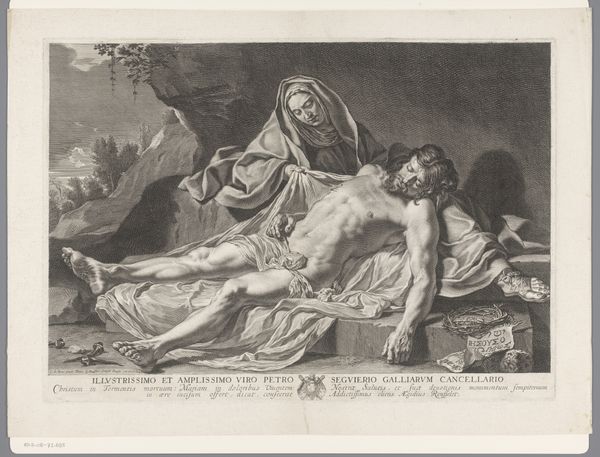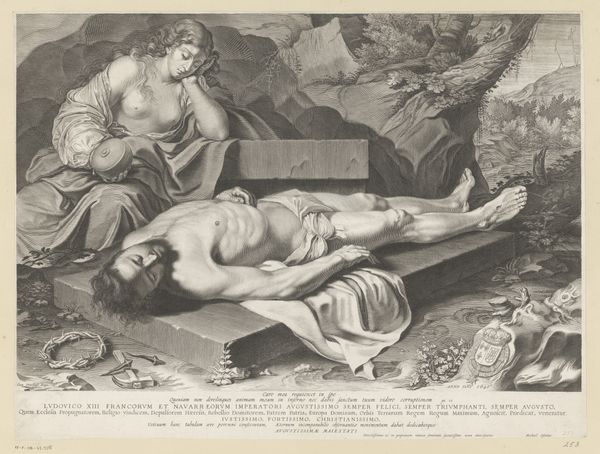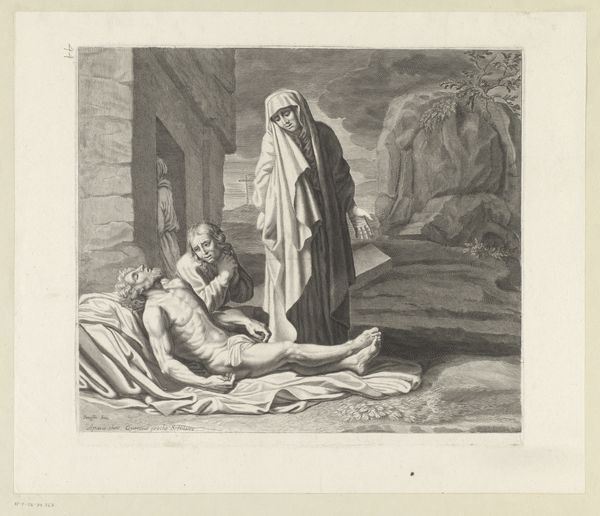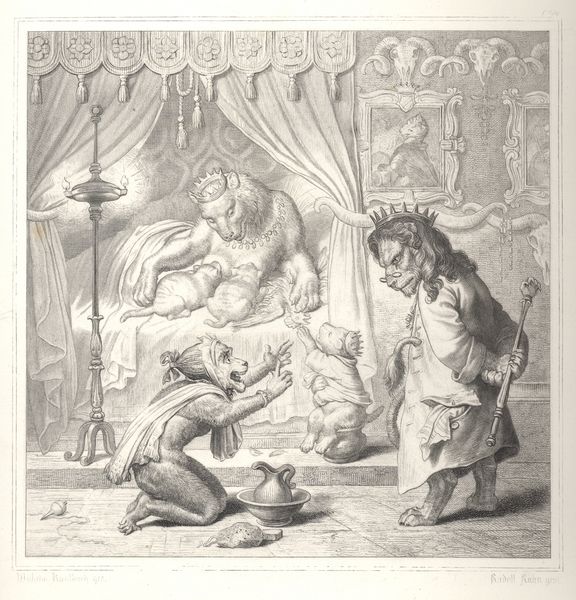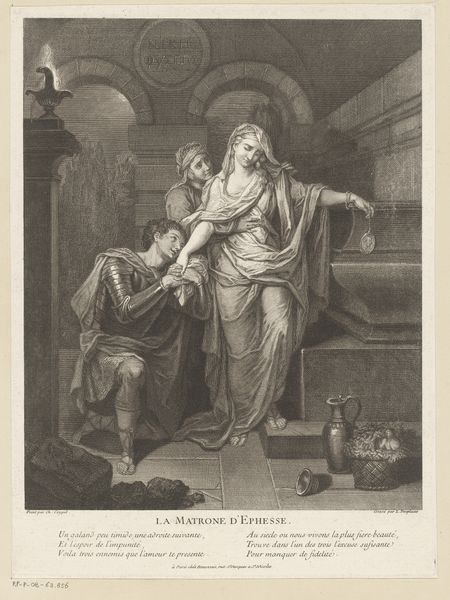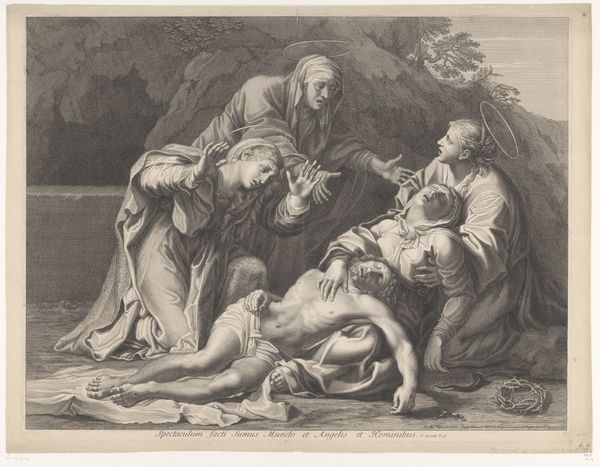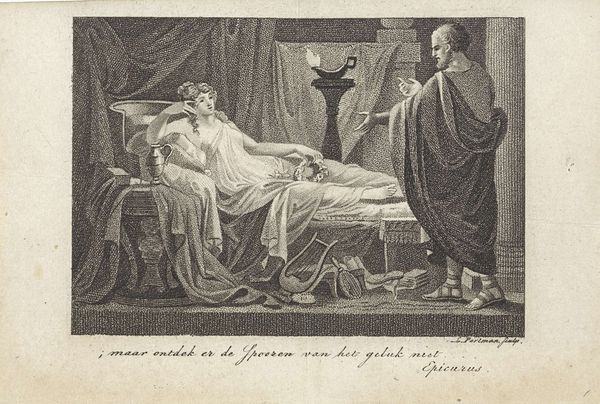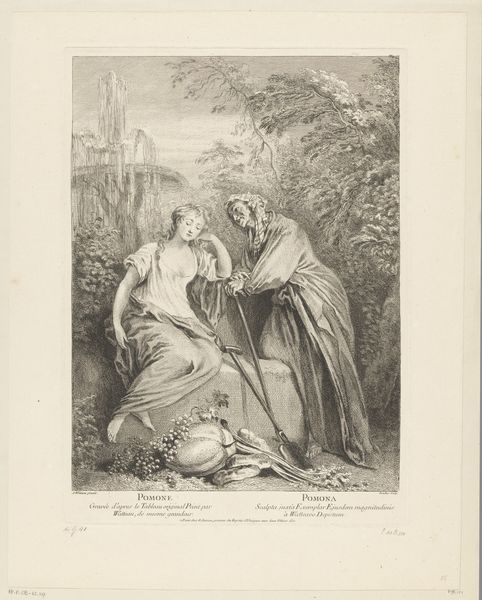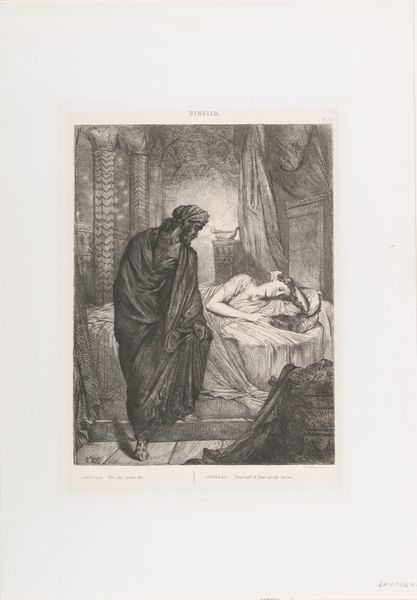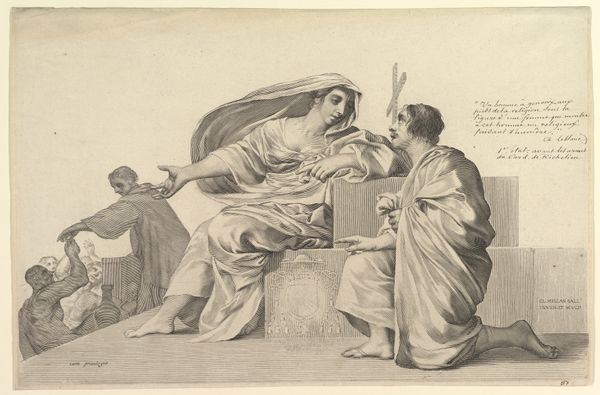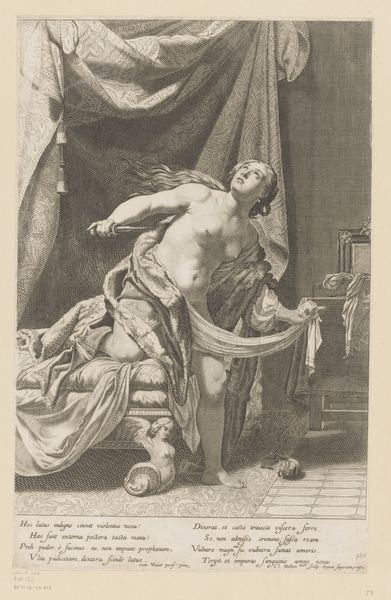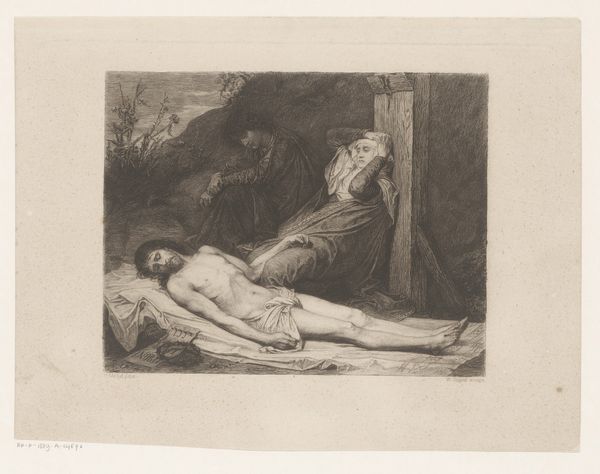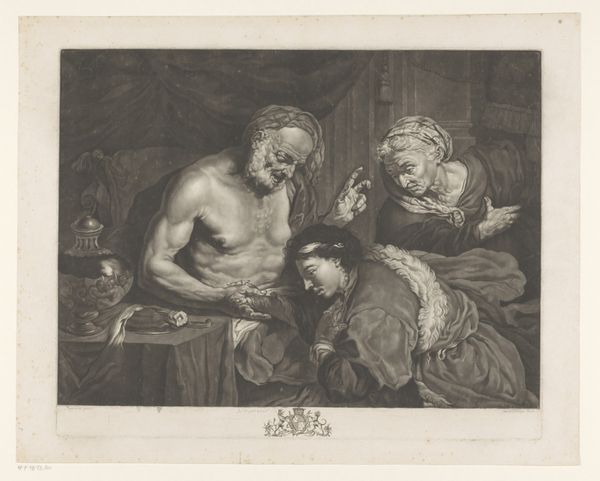
print, engraving
#
baroque
# print
#
old engraving style
#
figuration
#
history-painting
#
nude
#
engraving
Dimensions: height 204 mm, width 269 mm
Copyright: Rijks Museum: Open Domain
Curator: This is Michel Dorigny’s “Lamentation of Christ,” an engraving dating to 1644, a powerful piece rendered in the Baroque style. Editor: Woah. It’s somber. Really somber. All these lines… It feels like a whispered tragedy frozen in time. Like someone caught in the very moment of their deepest grief. Curator: Exactly. Dorigny’s depiction really leans into the emotional intensity characteristic of Baroque art. Consider the historical and religious context: This imagery of the dead Christ resonates deeply within Christian theology, marking the transition between sacrifice and resurrection. Editor: That explains why Mary looks so bereft. Her gaze and gesture seem like a desperate plea. Almost accusatory towards the heavens. You can almost hear her. I wonder if Dorigny ever felt this level of despair… losing someone like that? Curator: Grief is a universally shared experience, but for centuries, particularly within religious and academic circles, images such as these provided very clear instructions on *how* to perform mourning correctly and with adequate displays of emotional anguish. Editor: Interesting...It's almost performative, yet her suffering still feels visceral. The engraver's so precise. You can almost feel the cold marble beneath Christ's body. I can't stop looking at His face... He looks so still and resigned... almost peaceful. Curator: Note how Dorigny employed light and shadow to enhance the dramatic tension. Baroque artists very often used this contrast to emphasize certain aspects and provoke an emotional response, and it can be seen as an incredibly effective artistic choice. Also observe the textual component below, another strategy used in historical printmaking to provide relevant information. Editor: I appreciate that it shows both physical death and emotional response together so nakedly. It's intense... a moment stretched between agony and the unknown. It just hits you in the gut, you know? A glimpse into humanity in extremis. Curator: Indeed, its enduring power speaks to art's ability to represent complex human experiences across eras. It definitely makes you think. Editor: Absolutely, thanks for giving me a broader framework through which to see this art!
Comments
No comments
Be the first to comment and join the conversation on the ultimate creative platform.
